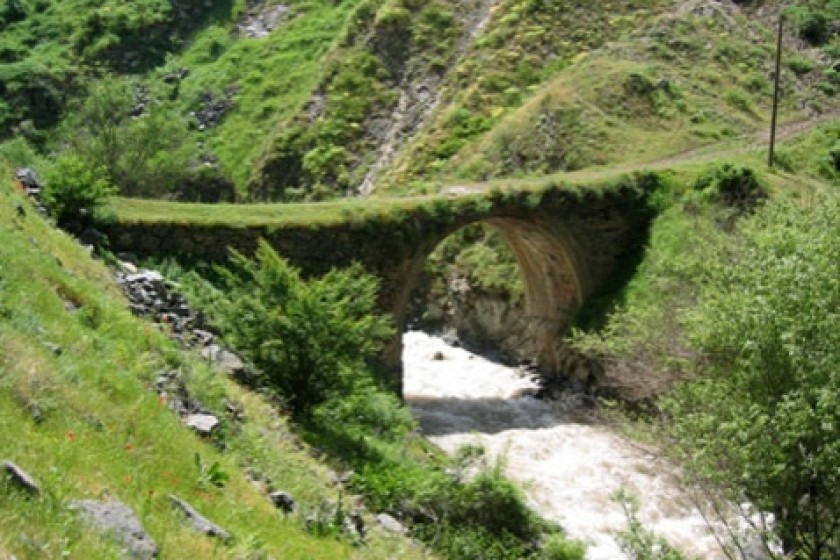Destruction by "Restoration" – Armenia's Ancient Monuments in Peril
This thread will document the growing number of historical buildings in Armenia that have been seriously damaged or even destroyed as a result of "restoration", "reconstruction", "renovation" or "redevelopment". I’ll also add reports about out-and-out demolitions.
The principal culprits seem to be Armenian oligarchs, the Armenian Church (often using oligarch money), and foreign "benefactors" (mainly wealthy diaspora Armenians, but sometimes foreign governments or ngo organisations). The protection of cultural monuments in Armenia has been reduced dramatically since independence. Hundreds of medieval churches and monasteries were given by the State to the Armenian Church, which went on to do whatever it wanted with them. And, if you have the money or the political clout, it seems that anyone can do whatever they want. Armenia is a signatory to various UNESCO and other international treaties intended to protect and conserve cultural monuments, yet Armenia now regularly ignores the requirements of those treaties.
Restoration versus Conservation
Restoration is the process of making alterations and repairs to a building with the intention of restoring it to its original form. Restoration is a more drastic intervention than conservation. Outrage at the damage done during ruthless "restorations" in 19th-century Europe created the first codes of conduct to limit such activities. These have progressed to the extent that today the concept of restoration is regarded as a discredited and obsolete practice that has been replaced by that of conservation.
Conservation is the preservation of an existing building, taking great care not to alter or destroy any aspect of it. Any repairs must be restricted to essential repairs only, and must always respect the existing character of the building. Article 9 of the International Charter for the Conservation and Restoration of Monuments and Sites (which Armenia is a signatory to) states that "the aim of restoration is to preserve and reveal the aesthetic and the historical value of the monument and is based on respect for the original building and on authentic documents". The fundamental principles of modern conservation are minimal intervention and conserve as found. Conservation methods must retain the authenticity of the monument, use materials sympathetic to the original structure, preserve important original fabric, and apply the least visual change to a structure.
This thread will document the growing number of historical buildings in Armenia that have been seriously damaged or even destroyed as a result of "restoration", "reconstruction", "renovation" or "redevelopment". I’ll also add reports about out-and-out demolitions.
The principal culprits seem to be Armenian oligarchs, the Armenian Church (often using oligarch money), and foreign "benefactors" (mainly wealthy diaspora Armenians, but sometimes foreign governments or ngo organisations). The protection of cultural monuments in Armenia has been reduced dramatically since independence. Hundreds of medieval churches and monasteries were given by the State to the Armenian Church, which went on to do whatever it wanted with them. And, if you have the money or the political clout, it seems that anyone can do whatever they want. Armenia is a signatory to various UNESCO and other international treaties intended to protect and conserve cultural monuments, yet Armenia now regularly ignores the requirements of those treaties.
Restoration versus Conservation
Restoration is the process of making alterations and repairs to a building with the intention of restoring it to its original form. Restoration is a more drastic intervention than conservation. Outrage at the damage done during ruthless "restorations" in 19th-century Europe created the first codes of conduct to limit such activities. These have progressed to the extent that today the concept of restoration is regarded as a discredited and obsolete practice that has been replaced by that of conservation.
Conservation is the preservation of an existing building, taking great care not to alter or destroy any aspect of it. Any repairs must be restricted to essential repairs only, and must always respect the existing character of the building. Article 9 of the International Charter for the Conservation and Restoration of Monuments and Sites (which Armenia is a signatory to) states that "the aim of restoration is to preserve and reveal the aesthetic and the historical value of the monument and is based on respect for the original building and on authentic documents". The fundamental principles of modern conservation are minimal intervention and conserve as found. Conservation methods must retain the authenticity of the monument, use materials sympathetic to the original structure, preserve important original fabric, and apply the least visual change to a structure.










Comment